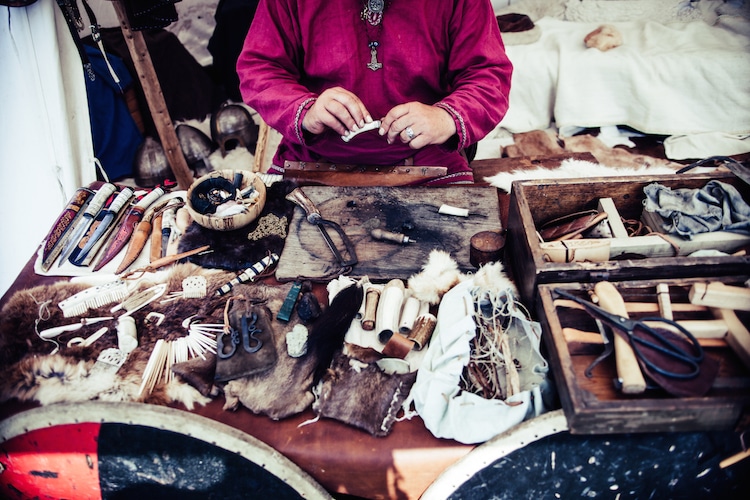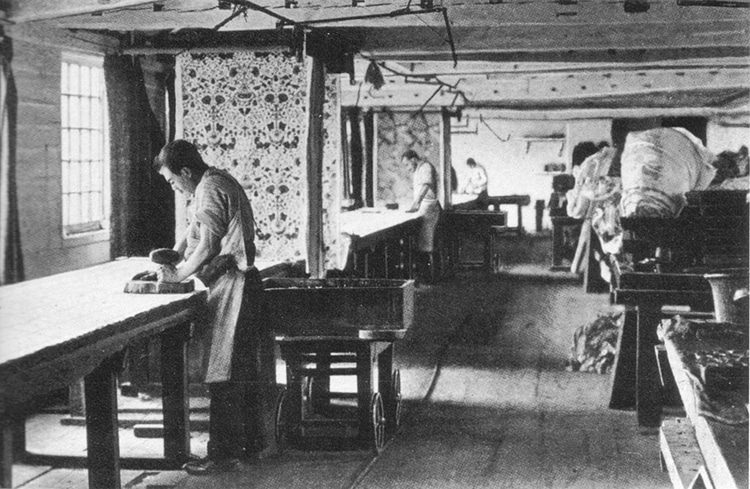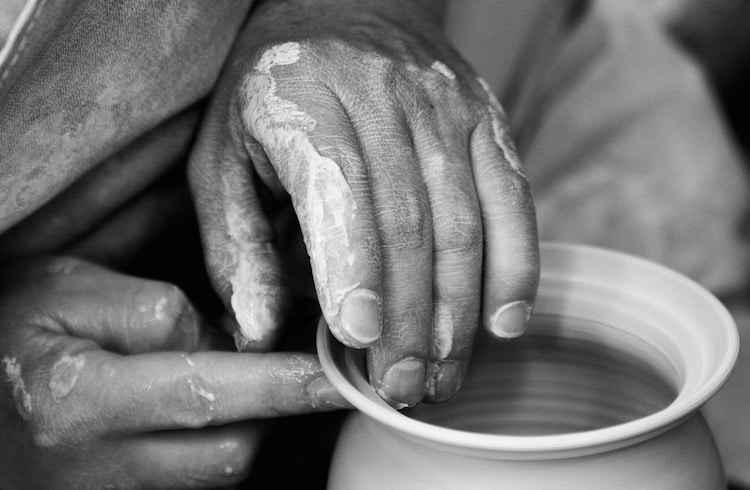
Photo: Clem Onojeghuo
Today, in the era of smartphones, social media, virtual reality, and 3D printing, technology is evolving faster than ever. And although new technological advancements can be exciting, they can also become overwhelming. In the last few decades, increasingly sophisticated mass production methods have led to an abundance of choices for consumers, but with that sometimes comes a loss of individuality and quality. For example, many of us can relate to visiting a friend’s house and noticing that they have the same IKEA rug/picture frame/throw pillows as you.
More and more people are therefore rejecting machine-produced products in favor of handmade items from independent retailers, crafters, and artists. This social trend mirrors the original Arts and Crafts Movement of the 19th century, when people advocated a return to traditional craftsmanship during the industrial revolution. Today, rather than completely reject modern technology, artists and consumers alike can use the Internet in their favor. Online stores like Etsy allow people easy access high quality craftsmanship and one-of-a-kind pieces. This in turn allows many contemporary artists and designers to make a living from their craft—an option that may not have been possible pre-Internet.
Not only this, but living in the Information Age gives creatives the opportunity to thrive, share ideas, and learn new skills. Many online communities exist where artists and crafters willingly share their knowledge by giving workshops, online classes, and spread their love of traditional craft.

Printing at Merton Abbey c. 1890. (Photo: By Anonymous for Morris & Co. via Wikimedia Commons {{PD-US}})
What was the Arts and Crafts movement?
One of the more influential design movements in history, The Arts and Crafts movement began in Britain around 1880, and spread quickly across Europe, America, and Japan. Born out of concern for the effects of industrialization on traditional crafts, it was led by English textile designer William Morris—along with a group of architects, designers, craftsmen, and artists— who united to protect their processes in decorative art.
Morris famously once said, “Have nothing in your houses that you do not know to be useful or believe to be beautiful.” Realizing the only way he could have the beautiful home he wanted, he decided to design every part himself. Having enjoyed the process so much, he decided to set up his own design firm, and by the 1880s, Morris had become an internationally renowned designer. Built in 1860, his home—known as the Red House—is now one of the most significant buildings of the Arts and Crafts era, and his woodblock-printed fabric and wallpaper designs are still in high demand.
The Revival
In opposition to mass consumerism and copy-cat products, today there are many communities of craftspeople who are working to create unique, hand-crafted ceramics, textiles, and furniture. Each with their own unique approach, and materials, they value the traditional crafts of the past, but often add a modern twist.
From innovative ceramic artists and furniture designers, to textile artists who are creatively pushing the boundaries of an age-old art, here’s just some of those contemporary artisans who are masters of their craft.
Ceramic Art

Photo: Pixabay
During the original Arts and Crafts movement, pottery was produced by companies such as Grueby, Marblehead, Newcomb College, Teco, and Rookwood. Their production methods usually relied on the preference of just one individual, who would have crafted the works by hand using a pottery wheel. Today, many small studio potters are rejecting mass production techniques and returning to traditional roots, working by hand to produce limited edition, or one-of-a-kind ceramics.
Angel Oloshove
Texas-based potter Angel Oloshove creates mesmerizing, wheel-spun vessels that feature rainbow-coloured glazes in soft gradients. She’s currently an artist-in-resident at Houston’s Center for Contemporary Craft, where they’re “Dedicated exclusively to craft at the highest level.”
